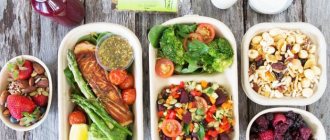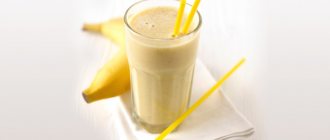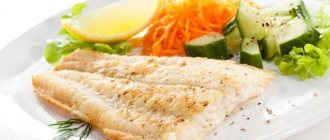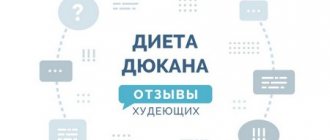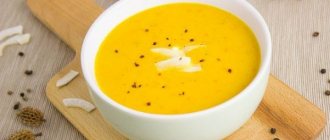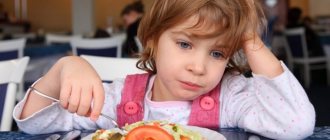General rules
Acetonemic conditions occur in children with infectious diseases, diseases of the digestive system or in stressful situations.
They are provoked by excessive physical and mental stress and dietary errors. When the need for glucose as an energy source exceeds its supply, glycogen stores in the liver are converted into glucose and are quickly depleted. Nervous and active children do not have enough glycogen reserves for high metabolic demands and fats are included in the exchange, and when they break down, ketone bodies are formed. Due to the imperfection of the enzyme system in children (deficiency of the enzyme that metabolizes ketone bodies), their accumulation occurs. Acidosis develops (a shift in the blood to the acidic side) and endogenous intoxication, which is accompanied by bouts of vomiting and weakness. Acetone is excreted in the urine, when breathing in the air, and through the skin of the child. The main complaint is attacks of nausea, vomiting (3-8 times a day), agitation turning into weakness, abdominal pain, smell of acetone from the mouth, and sometimes fever.
Acetone syndrome is not a disease, but a statement of the fact that the body’s glucose reserves have been exhausted. Therefore, the only treatment method is sweet drinks and proper nutrition after an attack.
The diet for acetone syndrome in children should contain:
- Easily digestible carbohydrates and consist of sweet cereals, curds, fruit purees, compotes and sweet jelly.
- Sufficient amount of fluid (1-1.5 liters per day).
- Products that support the alkaline reaction of urine: lemon juice, prunes, dates, figs, sweet berries and fruits, beets, carrots. Eggs, meat, fish, wheat bread cause acidification and are introduced only for 2-3 days. You should limit sour fruits (kiwi, rosehip decoction, currants).
For children subject to frequent acetonemic conditions, long intervals between meals are unacceptable. You need to know that this condition can be caused by any infection or cold, so for acute respiratory infections, the diet should be light and contain mainly simple carbohydrates.
What foods can you eat after an attack? Immediately after vomiting stops, you can give a sweet drink (tea, compote, juice, glucose solution). When the child is able to eat, and this may be on the second day, a gentle diet is prescribed, rich in carbohydrates and food portions should be small:
- liquid porridges (buckwheat, rice, corn, oatmeal) without sugar and salt;
- fruit mousses and jelly;
- biscuits;
- baked apple;
- vegetables and sweet fruits.
From the third or fourth day:
- vegetable soups;
- skim cheese;
- meat soufflé, turkey, rabbit, sea fish dishes;
- chicken eggs (omelet, soft-boiled);
- fermented milk products without preservatives and dyes.
Table No. 1 is prescribed for a period of at least a month . Nutrition should be moderately gentle on the stomach (exclude mechanical, chemical and temperature aggression). Dishes should not irritate the mucous membrane of the upper gastrointestinal tract and should not contain indigestible foods (turnips, radishes, asparagus, beans, radishes, peas). The food should be warm.
The diet for acetone in the urine in children involves a split diet (up to 6 times a day), in small portions. It is important that the break between meals is no more than 3 hours. If the child refuses to eat, let him drink a glass of fruit juice or compote with honey, eat any sweet fruits, dried fruits (prunes, dates, dried apricots) or cookies. But after a while you need to offer a full lunch or dinner again.
After vomiting, the mucous membrane of the stomach and esophagus suffers to a greater or lesser extent, so it will be better if the food is liquid and mushy. If you offer dishes with a dense consistency, then it is better to puree them. It is also worth mentioning that dishes are prepared boiled (steamed), they can be baked, but frying is excluded.
Since increased acetone in the urine is also associated with impaired fat metabolism and consumption of fatty foods, low-fat dairy and meat products should be present in the diet. It is unacceptable to consume fried foods, fatty meat broths, sour cream, smoked meats, and canned food.
The appearance of acetone in the urine during pregnancy is quite common, so women are constantly asked to take urine tests for ketone bodies. The cause of increased acetone during pregnancy may be any pathology or poor nutrition. But most often - a severe form of toxicosis with vomiting and lack of appetite. When vomiting, fluid and electrolytes are lost, and during hunger, proteins and fats are included in the metabolism, the breakdown product of which is ketone bodies (acetone), found in the urine. An unhealthy diet, in which fatty foods and large amounts of meat are consumed, can cause the appearance of acetone in the urine. It should be noted that excessive “infatuation” with sweets can also be accompanied by such disorders.
If there is acetone in the urine of pregnant women associated with toxicosis, a drinking regime is prescribed - drinking alkaline mineral water (Borjomi) in small sips so as not to provoke vomiting. You need to drink up to 1.5 liters of liquid per day. When nausea and vomiting disappear, you need to start eating small portions of salads, fruits, vegetable soups, juices, cereals. It is not recommended to fast, which may worsen the condition again.
If in the early stages the appearance of acetone in the urine of pregnant women may be the result of toxicosis, then in the later stages one can think about the presence of gestational diabetes mellitus .
This means that the woman will have to undergo a more thorough examination by an endocrinologist.
Authorized Products
- Soups made with vegetable broth from well-cooked cereals, vegetables seasoned with an egg-milk mixture, borscht in vegetable broth.
- Porridge (buckwheat, oatmeal, wheat, corn).
- Rabbit and turkey are allowed in the diet first, a little later beef and lean pork are introduced (not daily), sea fish up to three times a week, chicken - once a week. Meat products are used to prepare cutlets, casseroles with vegetables, meatballs with rice, and quenelles.
- Eggs are allowed daily up to one per day.
- Cottage cheese with low fat content.
- Juices with pulp (diluted with water), dried fruit compote, fruit juice.
- Milk is initially limited and given only as an additive to water-based cereals.
- Kefir and yogurts are better than making them yourself from homemade milk. Yogurts with additives and artificial colors are not allowed.
- Fresh vegetables and fruits are introduced gradually, not from the first week. Start taking fruits with heat-treated ones (baked apples and pears, fruit puree, mashed compotes, jelly, jelly). Potatoes, carrots and beets may be present in soups; baked pumpkin and zucchini are allowed.
- Among sweet desserts, jam, honey, caramel, marmalade, marshmallows are allowed, but all in limited quantities.
- Drinks - sweet juices from fruits and berries.
Table of permitted products
| Proteins, g | Fats, g | Carbohydrates, g | Calories, kcal | |
Vegetables and greens | ||||
| eggplant | 1,2 | 0,1 | 4,5 | 24 |
| zucchini | 0,6 | 0,3 | 4,6 | 24 |
| cabbage | 1,8 | 0,1 | 4,7 | 27 |
| broccoli | 3,0 | 0,4 | 5,2 | 28 |
| carrot | 1,3 | 0,1 | 6,9 | 32 |
| cucumbers | 0,8 | 0,1 | 2,8 | 15 |
| salad pepper | 1,3 | 0,0 | 5,3 | 27 |
| iceberg lettuce | 0,9 | 0,1 | 1,8 | 14 |
| pumpkin | 1,3 | 0,3 | 7,7 | 28 |
| dill | 2,5 | 0,5 | 6,3 | 38 |
Fruits | ||||
| apples | 0,4 | 0,4 | 9,8 | 47 |
Nuts and dried fruits | ||||
| raisin | 2,9 | 0,6 | 66,0 | 264 |
| dried figs | 3,1 | 0,8 | 57,9 | 257 |
| dried apricots | 5,2 | 0,3 | 51,0 | 215 |
| dried apricots | 5,0 | 0,4 | 50,6 | 213 |
| prunes | 2,3 | 0,7 | 57,5 | 231 |
Cereals and porridges | ||||
| buckwheat (kernel) | 12,6 | 3,3 | 62,1 | 313 |
| oat groats | 12,3 | 6,1 | 59,5 | 342 |
| pearl barley | 9,3 | 1,1 | 73,7 | 320 |
| rice | 6,7 | 0,7 | 78,9 | 344 |
Flour and pasta | ||||
| pasta | 10,4 | 1,1 | 69,7 | 337 |
| noodles | 12,0 | 3,7 | 60,1 | 322 |
| buckwheat noodles | 14,7 | 0,9 | 70,5 | 348 |
Confectionery | ||||
| jam | 0,3 | 0,2 | 63,0 | 263 |
| jelly | 2,7 | 0,0 | 17,9 | 79 |
| marshmallows | 0,8 | 0,0 | 78,5 | 304 |
| milk candies | 2,7 | 4,3 | 82,3 | 364 |
| fondant candies | 2,2 | 4,6 | 83,6 | 369 |
| fruit and berry marmalade | 0,4 | 0,0 | 76,6 | 293 |
| paste | 0,5 | 0,0 | 80,8 | 310 |
| Maria cookies | 8,7 | 8,8 | 70,9 | 400 |
Raw materials and seasonings | ||||
| honey | 0,8 | 0,0 | 81,5 | 329 |
| sugar | 0,0 | 0,0 | 99,7 | 398 |
Dairy | ||||
| kefir 1.5% | 3,3 | 1,5 | 3,6 | 41 |
| Ryazhenka | 2,8 | 4,0 | 4,2 | 67 |
Cheeses and cottage cheese | ||||
| cottage cheese 1% | 16,3 | 1,0 | 1,3 | 79 |
Meat products | ||||
| beef | 18,9 | 19,4 | 0,0 | 187 |
| rabbit | 21,0 | 8,0 | 0,0 | 156 |
Bird | ||||
| boiled chicken breast | 29,8 | 1,8 | 0,5 | 137 |
| boiled chicken drumstick | 27,0 | 5,6 | 0,0 | 158 |
| boiled turkey fillet | 25,0 | 1,0 | — | 130 |
Eggs | ||||
| soft-boiled chicken eggs | 12,8 | 11,6 | 0,8 | 159 |
Fish and seafood | ||||
| flounder | 16,5 | 1,8 | 0,0 | 83 |
| pollock | 15,9 | 0,9 | 0,0 | 72 |
| cod | 17,7 | 0,7 | — | 78 |
| hake | 16,6 | 2,2 | 0,0 | 86 |
Non-alcoholic drinks | ||||
| mineral water | 0,0 | 0,0 | 0,0 | — |
| green tea | 0,0 | 0,0 | 0,0 | — |
Juices and compotes | ||||
| apricot juice | 0,9 | 0,1 | 9,0 | 38 |
| carrot juice | 1,1 | 0,1 | 6,4 | 28 |
| peach juice | 0,9 | 0,1 | 9,5 | 40 |
| plum juice | 0,8 | 0,0 | 9,6 | 39 |
| tomato juice | 1,1 | 0,2 | 3,8 | 21 |
| pumpkin juice | 0,0 | 0,0 | 9,0 | 38 |
| * data is per 100 g of product | ||||
What can a child eat?
Parents should know what foods are allowed to feed their son or daughter. With the right approach, you can make your baby’s diet balanced and rich in essential microelements and vitamins. What can a baby eat with elevated acetone:
- lean meats: turkey, rabbit;
- fermented milk products with low fat content - always fresh, milk;
- vegetables (zucchini, carrots, pumpkin, potatoes), boil or bake them; over time, you can give fresh carrots in small quantities;
- chicken eggs (no more than 1 per day);
- some freshly squeezed juices;
- from sweets - a small amount of honey, jam.
At the onset of the disease, the diet should be free of any meat and fresh vegetables. After relief, you can gradually introduce these foods into your diet. When the level of ketone bodies decreases, you can expand the child’s diet.
On the first day, do not overload your baby with any food. Make sure he gets plenty of fluids. If your child asks for food, give him a baked apple or a couple of unsweetened crackers.
Although the symptoms will go away within a few days with proper treatment, a certain diet should be followed for another 2-3 months. It should be based on the following products:
- Porridge made from buckwheat, corn, pearl barley, oatmeal and wheat. Make them liquid.
- Dairy and fermented milk products. Buy for your child only fresh products with a maximum fat content of 5%, which do not have added sugar.
- Soups that are cooked in vegetable broths.
- Lean types of meat - use turkey, rabbit, chicken or veal for dishes.
- Sea fish - prepare dishes for your little one from cod, pollock, blue whiting, hake, and flounder.
- Baked, raw and stewed vegetables - cook carrots, zucchini, pumpkin, different types of cabbage, potatoes and others for your child.
- Berries and sweet types of fruits, as well as dried fruits.
- Boiled eggs – up to one per day.
- Some nuts.
- Compotes made at home without sugar, as well as fruit drinks.
- As for sweets, it is permissible to give marmalade, honey, jam, marshmallows or caramel in moderation.
Fully or partially limited products
- Concentrated meat and fish broths, jellied meat, veal, chicken once a week, duck, goose, liver, herring, fatty pork, kidneys, brains, sausages, canned meat and fish.
- Fatty foods, fish oil, which is easier than animal oil, is absorbed in the intestines.
- Food with additives, preservatives and dyes.
- Millet, pearl barley and barley are more difficult to digest and are not recommended for children with this condition.
- Tomatoes, sorrel, cauliflower, parsley, rhubarb, spinach, which contain large amounts of uric acid, as well as all legumes (beans, lentils, beans, peas, soybeans) and white cabbage, which increase gas formation, and vegetables that irritate the gastrointestinal tract, are excluded from vegetables. (onion garlic).
- Mayonnaise, ketchup, adjika, canned vegetables, tomato and mushroom sauces due to the content of vinegar and preservatives.
- Sour cream, full fat milk and cottage cheese.
- Sour fruits (oranges, kiwi), fruits high in potassium (bananas, apricots, dried apricots, watermelons, melons), since potassium slows down the excretion of ketoacids in the urine.
- Chocolate sweets, cocoa, puff pastry, baked goods, fresh bread.
- Kvass, sweet carbonated drinks.
Table of prohibited products
| Proteins, g | Fats, g | Carbohydrates, g | Calories, kcal | |
Vegetables and greens | ||||
| canned vegetables | 1,5 | 0,2 | 5,5 | 30 |
| swede | 1,2 | 0,1 | 7,7 | 37 |
| peas | 6,0 | 0,0 | 9,0 | 60 |
| cauliflower | 2,5 | 0,3 | 5,4 | 30 |
| bulb onions | 1,4 | 0,0 | 10,4 | 41 |
| chickpeas | 19,0 | 6,0 | 61,0 | 364 |
| parsley | 3,7 | 0,4 | 7,6 | 47 |
| radish | 1,2 | 0,1 | 3,4 | 19 |
| white radish | 1,4 | 0,0 | 4,1 | 21 |
| tomatoes | 0,6 | 0,2 | 4,2 | 20 |
| beans | 7,8 | 0,5 | 21,5 | 123 |
| horseradish | 3,2 | 0,4 | 10,5 | 56 |
| spinach | 2,9 | 0,3 | 2,0 | 22 |
| sorrel | 1,5 | 0,3 | 2,9 | 19 |
Fruits | ||||
| oranges | 0,9 | 0,2 | 8,1 | 36 |
| bananas | 1,5 | 0,2 | 21,8 | 95 |
Mushrooms | ||||
| mushrooms | 3,5 | 2,0 | 2,5 | 30 |
| marinated mushrooms | 2,2 | 0,4 | 0,0 | 20 |
Nuts and dried fruits | ||||
| nuts | 15,0 | 40,0 | 20,0 | 500 |
| almond | 18,6 | 57,7 | 16,2 | 645 |
Snacks | ||||
| potato chips | 5,5 | 30,0 | 53,0 | 520 |
Bakery products | ||||
| buns | 7,9 | 9,4 | 55,5 | 339 |
| Rye bread | 6,6 | 1,2 | 34,2 | 165 |
Confectionery | ||||
| pastry cream | 0,2 | 26,0 | 16,5 | 300 |
| shortbread dough | 6,5 | 21,6 | 49,9 | 403 |
Ice cream | ||||
| ice cream | 3,7 | 6,9 | 22,1 | 189 |
Chocolate | ||||
| chocolate | 5,4 | 35,3 | 56,5 | 544 |
Raw materials and seasonings | ||||
| mustard | 5,7 | 6,4 | 22,0 | 162 |
| ketchup | 1,8 | 1,0 | 22,2 | 93 |
| mayonnaise | 2,4 | 67,0 | 3,9 | 627 |
Dairy | ||||
| milk 4.5% | 3,1 | 4,5 | 4,7 | 72 |
| cream 35% (fat) | 2,5 | 35,0 | 3,0 | 337 |
| whipped cream | 3,2 | 22,2 | 12,5 | 257 |
Meat products | ||||
| fatty pork | 11,4 | 49,3 | 0,0 | 489 |
| salo | 2,4 | 89,0 | 0,0 | 797 |
| bacon | 23,0 | 45,0 | 0,0 | 500 |
Sausages | ||||
| smoked sausage | 9,9 | 63,2 | 0,3 | 608 |
Bird | ||||
| smoked chicken | 27,5 | 8,2 | 0,0 | 184 |
| duck | 16,5 | 61,2 | 0,0 | 346 |
| smoked duck | 19,0 | 28,4 | 0,0 | 337 |
| goose | 16,1 | 33,3 | 0,0 | 364 |
Fish and seafood | ||||
| smoked fish | 26,8 | 9,9 | 0,0 | 196 |
| black caviar | 28,0 | 9,7 | 0,0 | 203 |
| salmon caviar granular | 32,0 | 15,0 | 0,0 | 263 |
| salmon | 19,8 | 6,3 | 0,0 | 142 |
| canned fish | 17,5 | 2,0 | 0,0 | 88 |
| salmon | 21,6 | 6,0 | — | 140 |
| trout | 19,2 | 2,1 | — | 97 |
Oils and fats | ||||
| butter | 0,5 | 82,5 | 0,8 | 748 |
| olive oil | 0,0 | 99,8 | 0,0 | 898 |
| sunflower oil | 0,0 | 99,9 | 0,0 | 899 |
| animal fat | 0,0 | 99,7 | 0,0 | 897 |
| cooking fat | 0,0 | 99,7 | 0,0 | 897 |
Alcoholic drinks | ||||
| vodka | 0,0 | 0,0 | 0,1 | 235 |
| beer | 0,3 | 0,0 | 4,6 | 42 |
Non-alcoholic drinks | ||||
| soda water | 0,0 | 0,0 | 0,0 | — |
| cola | 0,0 | 0,0 | 10,4 | 42 |
| sprite | 0,1 | 0,0 | 7,0 | 29 |
| * data is per 100 g of product | ||||
Prohibited products for elevated acetone in children
If acetone appears in the urine, it is necessary to exclude all high-calorie, fatty, difficult-to-digest foods from the baby’s diet, including:
- Meat and fish of fatty varieties.
- Meat and fish broths.
- Meat by-products.
- Smoked and canned food, including marinades and vegetable pickles.
- Fatty fermented milk products.
- Seafood, particularly shrimp.
- Mayonnaise and various spices.
- Vegetables: eggplants, mushrooms, tomatoes.
- Sour fruits.
- Legumes.
- Semi-finished products and fast food.
- Greens: parsley, sorrel, spinach.
- All sweet and savory baked goods, including fresh bread.
- Sweets.
- Drinks: highly concentrated juices and carbonated drinks, rosehip infusion, coffee.
The listed products can not only complicate the course of the disease, but also negatively affect the general well-being and condition of the child.
Menu for children with acetone syndrome (Diet)
When developing a menu, you need to take into account the child’s tastes; you can also notice which foods make him worse, then they are strictly limited. It is impossible to remove fats from the diet at all; they must be limited and replaced by two-thirds with sunflower, olive, and corn oil, and given with salads or boiled potatoes. Fats can be given in combination with carbohydrates. That is, butter with porridge or vegetable stew, sour cream in vegetable soup, fried cutlets with cereal side dishes.
Difficult-to-digest fats (pork, lamb, duck, pastries and cakes) should be completely excluded. You should sharply limit the meat of young animals and birds, offal, sorrel, rhubarb, tomatoes, oranges and bananas. Preference is given to vegetable and dairy foods and cereals. To normalize metabolism, it is good to introduce cottage cheese, fish and oatmeal.
Moderate use of spices (dill, flaxseed, ginger, coriander), which are introduced to stimulate the ripening of an imperfect enzyme system.
| Breakfast |
|
| Lunch |
|
| Dinner |
|
| Afternoon snack |
|
| Dinner |
|
| For the night |
|
| Breakfast |
|
| Lunch |
|
| Dinner |
|
| Afternoon snack |
|
| Dinner |
|
| For the night |
|
| Breakfast |
|
| Lunch |
|
| Dinner |
|
| Afternoon snack |
|
| Dinner |
|
| For the night |
|
Medical nutrition
In children with metabolic disorders and impaired absorption of fats, diet and therapeutic diet are important. The principle of organizing digestive discipline is aimed at reducing the load on the liver, kidneys, and digestive system
Exclude from the diet:
- fatty fermented milk products;
- fatty meat, fish, offal and rich broths based on them;
- sauces, especially mayonnaise, ketchup;
- legumes: beans, corn, beans, peas;
- smoked meats, marinades, pickles.
Food should be prepared by boiling, stewing, steaming
It is important that the diet includes fresh vegetables and fruits, with the exception of citrus fruits
It is recommended to drink more fluid (up to 1.5-2 liters per day). Particularly useful are unsweetened berry fruit drinks, dried fruit compotes, and rosehip berry decoctions. It is recommended to pre-dilute citrus juices with warm water in a 1:1 ratio.
It is not recommended to completely exclude fats from a child’s diet, but whenever possible, animal fats are replaced with vegetable fats. A sample menu for the day includes:
- oatmeal with raspberries, tea with milk, crackers;
- chicken soup with homemade noodles, mashed potatoes, lean cutlets;
- berry jelly, slices, corn flakes;
- vegetable stew with herbs, banana, cranberry juice.
A gastroenterologist or nutritionist can provide assistance in creating a daily menu. The diet is streamlined. Frequent meals in small portions are recommended. You should drink it 20-30 minutes before or after a meal.
The prognosis for acetonemia is favorable. It usually goes away on its own in late adolescence
In secondary forms of pathology, it is important to eliminate the underlying disease
A more unfavorable prognosis is observed in the absence of adequate therapy, nutritional and drug correction, and frequent ketoacidotic crises. With progressive acetonemia, serious complications develop from internal organs and systems, including the development of acidotic coma and the death of the patient.
Read more: treatment of gastroenteritis in children
Recipes
The acetone diet in children is predominantly vegetable and dairy, so breakfast consists of cereals cooked in water or with the addition of milk. You can also give your child cottage cheese or cook omelettes. The first courses are often clear, non-rich soups (vegetable or cereal).
Fish dishes should be given preference and cooked 3 times a week. It can be baked fish, steamed or baked fish cutlets, dumplings, stewed fish with vegetables. You can not be lazy and please your child with healthy desserts, especially since carbohydrates are not limited to: fruit and berry mousses, carrot and pumpkin casseroles with honey and dried fruits, sambuca, fruit and berry souffles.
First meal
Rice soup with carrots
Vegetable broth, rice, carrots, butter.
Boil rice and carrots and puree. Combine with vegetable broth, add salt and oil.
Second courses
Turkey and Zucchini Casserole
Turkey meat, vegetable oil, milk, flour, zucchini, egg, salt.
Pass the boiled meat through a meat grinder, add milk sauce and beaten egg. Mix the minced meat with grated zucchini and add salt. Place on a baking sheet, pour sauce on top and bake.
Dessert
Curd soufflé
Grind the cottage cheese, add milk, sour cream, yolk and semolina. Beat everything in a mixer and finally add the whipped whites into the mixture. The curd mass in the mold is steamed.
For children
Acetone syndrome and the smell of acetone from the mouth is not a disease, but a statement of the fact that the body’s glucose reserves have been exhausted. Therefore, the only treatment method is sweet drinking. In a serious condition and with frequent vomiting, it is not possible to give the child something to drink and his condition worsens. In such cases, hospitalization is suggested and glucose solution is administered intravenously. For mild and moderate crises (“+” or “++”), the child is treated at home. Remember that vomiting should be stopped as quickly as possible, because it leads to dehydration, weakens the immune system and causes an increase in ketone bodies.
For acetone in children, Komarovsky recommends giving glucose tablets or fructose (add to boiled water). In case of illness, stress and stress, you need to give a sweet drink at the first sign.
During the first 12 hours, when a crisis has developed, hunger is prescribed and every 15 minutes you need to give the child alkaline mineral water without gas (Borjomi, Essentuki), 1-2% solution of baking soda, alternating with sweet tea with lemon, glucose from ampoules. Regidron , Orsol , Humana will also help , they restore the electrolyte composition of the blood and contain glucose, so there is no need to administer it additionally.
A cleansing enema with soda (1 teaspoon per glass of water), which can neutralize ketone bodies in the intestines, has a good effect. In addition to these recommendations, Komarovsky advises giving the child the drug Nicotinamide , which regulates glucose metabolism. Take at a dose of 5 mg per kg of child’s weight three times a day (1 ml of 5% solution contains 50 mg). Manifestations of the acetonemic crisis begin to subside on days 2-3.
Measures to prevent these conditions include limiting animal fats and fatty foods. It is undesirable for a child to be in the sun for a long time; he needs to be protected from negative emotions. Moderate physical activity, exposure to air and water procedures are important. This syndrome usually resolves by age 10 or earlier. However, children suffering from acetone syndrome should be observed by an endocrinologist and periodically tested for blood sugar levels.
Reviews and results
- “... I know what it is - a child has had it more than once. The last time was due to fatty foods (I ate lard for several days). I already know what to do. If acetone is high, immediately take Borjomi or soda solution, glucose from ampoules, enemas with enterosgel. In my experience, Enterosgel removes acetone well, so as soon as I smell acetone, I give it a teaspoon 3 times a day. Then we move on to soups (with water and without oil), potatoes and cereals. Only from the fourth day a little meat and fruit. We were on a diet for 2.5 months”;
- “... There was acetone in the urine and toxicosis was severe. I couldn’t eat or drink anything - everything flew back out. As a result, I lost 9 kg in a month. It was getting worse, so they sent me to the hospital and gave me glucose. I lay there for 4 days and it was dripping all day. After the first dropper I ate! Every day the acetone decreased. At home I followed a diet - vegetables, boiled meat, porridge. I began to feel much better. My friend didn’t bring herself to any state - she tried to drink a lot and didn’t eat fatty foods, everything went away for her without treatment”;
- “... The child developed acetone after a sore throat. We treated ourselves at home: Regidron, Borjomi, tea, decoction of dried apricots and raisins. She gave 2 liters per day (she also gave water at night, every 40 minutes). I did soda microenemas every 3 hours. On the second day there was no vomiting and they ate wheat crackers with rice water; on the 3rd day there was rice porridge with raisins, then kefir and meat. We were on a diet for a month and had to prepare dietary meals separately for the child. I cooked everything in a double boiler and carefully thought through the diet. My daughter recovered quickly from her diet and her appetite is now good.”
Diet with acetone in children: menu during the acute phase of the disease
As a rule, the first days of illness are very difficult for a child with repeated vomiting, diarrhea and deterioration in general health. During this period, the body intensively tries to cleanse itself of toxins; this is an important stage on the path to recovery. It is quite natural for a child to completely refuse to eat. To maintain the child’s body during this acute period, it is enough to provide the baby with plenty of fluids in accordance with the above recommendations.
On the first day after the urge to vomit has stopped and the temperature has stabilized, the child can be offered several homemade crackers made from white or gray bread.
The next day, you can supplement the child’s menu with baked apples and rice water, for the preparation of which you should boil 100 g of white rice in three liters of water without salt and other spices.
Next, you can offer your child boiled rice porridge (it’s better if it is completely digested), which, if desired, can also be pureed using a blender.
Approximately on the fourth day after the end of the crisis period, it is allowed to include light vegetable soup in the baby’s diet. It, as in principle, all food during this period should not contain heavy foods (such as legumes and mushrooms) and fats, which the digestive system is not yet able to cope with.
The transition to a normal lifestyle should be very gradual : after four days, provided that the child’s condition has returned to normal, the menu can be expanded, but only within the boundaries of a special diet with increased acetone.
